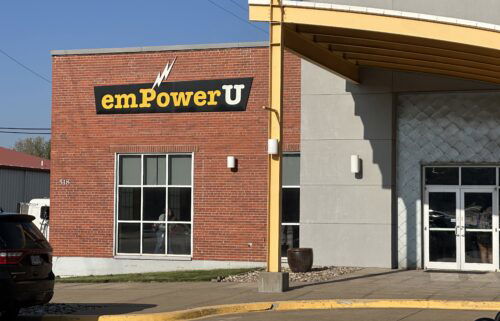This city removed water fluoridation and is now reinstating it. Here’s what it cost residents.

Robert Harding Video // Shutterstock
This city removed water fluoridation and is now reinstating it. Here’s what it cost residents.
If political appointments were made purely on qualifications and expertise, Robert F. Kennedy Jr. wouldn’t be running America’s public health policy. But under President Donald Trump, the anti-vaccine activist is pushing local and state governments to stop adding additional fluoride to drinking water.
Fluoride naturally occurs in drinking water in various concentrations, but municipalities add fluoride to their water to help prevent tooth decay. Kennedy and many others claim that fluoride is an “industrial waste” linked to issues from bone cancer to neurodevelopmental disorders, which has been repeatedly debunked by scientists and medical professionals. Despite the Centers for Disease Control declaring community water fluoridation to be “one of the 10 greatest public health achievements of the 20th century,” some states and cities have hopped on the bandwagon.
Utah became the first state to ban water fluoridation in March, followed by Florida in April, joining dozens of individual municipalities that have done so. Other local governments in the U.S. and beyond, from Louisiana to Montreal, are considering removing fluoride or have already begun the process.
But Next City reports that Calgary, Canada, offers a clear lesson into what happens when fluoride is removed — and how costly it can be to reinstate it.
In 2010, Calgary City Councilor Gian-Carlo Carra was running for his seat. A background in sustainable city building and a desire for a more walkable and transit-served Calgary fueled his effort. As he was out door-knocking ahead of the election, he was delighted to hear that his concerns resonated with residents — but was also surprised at how much people had to say about fluoride.
“There were a lot of people for whom fluoridation was a big issue,” Carra recalls. “And I was open to conversations about change.”
Carra won his seat in October 2010. The following month, the council was looking for places to trim unnecessary spending to “remove red tape and supercharge opportunities for building a different city,” he says.
With a “$10-20 million investment” in the city’s aging fluoride injection system looming, “in the spirit of cost cutting and in the spirit of having heard from a number of people, we put fluoride on the chopping block and had a very thorough conversation with the public about it.”
Carra remembers hearing some of the same conspiracy theories that surround water fluoridation today, which he says didn’t influence the decision. What he says did, though, was a conflict with Alberta Health Services, the province’s public health authority.
Carra says that Alberta’s position was that fluoridation was “absolutely necessary,” but that it expected individual cities like Calgary to be responsible for doing so. The council felt like the city’s limited tax base shouldn’t be burdened with carrying out public health services that it viewed as the responsibility of the province.
“I’m a big believer in the idea that if we actually wanted people’s dental health to be good in a land of universal medicine, we should also have a land of universal dental,” Carra says. In Canada, dental and vision care are excluded from the country’s universal health insurance program. “It seemed weird to me that the public health authority was so laser focused on a very minor thing like fluoridation and was very silent on a very big thing like universal dental care.”
In May 2011, as a result of cost cutting and differences between the city and the province, Calgary ended its water fluoridation. “There were a lot of people who were delighted and there didn’t seem to be many people who were outraged,” he says.
But Juliet Guichon, a community health science and pediatrics professor at the University of Calgary, was angry.
In 2017, Guichon met an acquaintance who worked as a dentist and who “was beside herself” over the move to end fluoridation, she recalls. “As she explained it to me, her whole practice had changed” because “she was seeing children who were now six years old who had never had the benefit of water fluoridation.”
Guichon’s friend implored her to do something about it, so she did. Guichon and a coterie of dentists, pediatric specialists, and concerned parents and grandparents started Calgarians For Kids’ Health, a citizens group that set out to get fluoride back in Calgary’s drinking water.
In August 2017, the group set out to make fluoridation a city council election issue. They created a dashboard of electoral candidates and separated them based on their position (or lack thereof) on water fluoridation. “Some electors told us that they voted on the basis of fluoridation because, their view was that if the candidate cannot figure out fluoridation, then they probably are not fit for office,” Guichon recalls.
Their efforts to make it a determining electoral issue failed, but that wasn’t the end of their work. “We carried on with public events, opinion articles, letters to the media, letters to elected officials and meetings with them,” she says, with the goal of securing the support of eight of the 15 councilmembers to reinstate fluoridation. Eventually people started sending them money and the group bought portable marquee signs.
The signs addressed city councilors by name with a simple message: Our teeth are rotting. Return our fluoridation. “Those signs were perhaps the single most effective thing we did,” Guichon says.
By way of a ballot question within the 2021 election, Calgarians For Kids’ Health got its victory.
Carra says that in addition to “a clear majority of the population who wanted fluoridation reinstated,” additional scientific data, as well as the rise of “really noxious anti-science [sentiment on] global levels and conspiracy theories,” influenced the decision. “There were measurable impacts to the dental health of Calgarians” — like an uptick in cavities among children — “from not having fluoride in the water.”
But reinstating it was no small task.
The city reinstated fluoridation on June 30, a process that Carra says has been both expensive and difficult. He estimates the capital infrastructure cost to do so at over $20 million.
Because adding fluoride to water requires monitoring naturally occurring levels that fluctuate, “we need to have a pretty sophisticated system that measures in real time what the natural rate of fluoride is and then up it to a thoughtful level,” he says. “Any day now we’re going to turn the taps back on and re-fluoridate our drinking water.”
This story was produced by Next City, a nonprofit newsroom covering solutions for equitable cities, and reviewed and distributed by Stacker.
![]()



